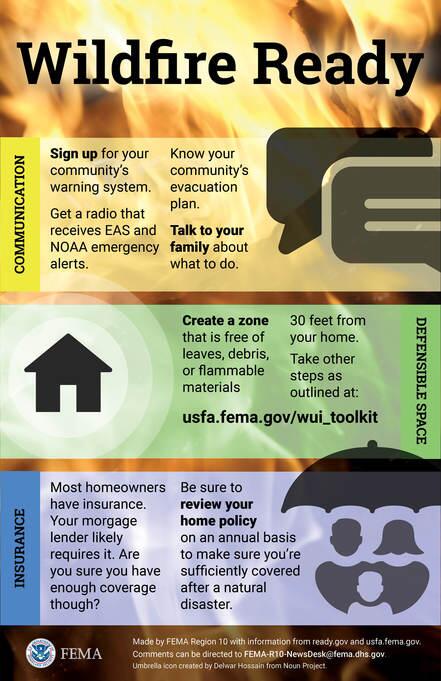Warm weather and the end of the rainy season bring increased fire risk to Topanga, but fire season is already underway across the state. While Topanga has been spared from recent major fires, the last fire seasons have had numerous close calls—from the massive 2018 Woolsey Fire to the multiple small fires in Topanga and Pacific Palisades last year.
A peak fire season that coincides with the coronavirus pandemic is expected to cause a range of complications that impact everything from fire fighter safety to the need for new evacuation center protocols. There have already been 1289 wildfire incidents in 2020, with an estimated 1,925 acres burned, according to CalFire.
California Governor Gavin Newsom stated on May 13 that the California Public Utilities Commission is creating a 106-person wildfire safety division to monitor investor-owned utilities in an effort to prevent types of incidents that caused the catastrophic Paradise and Woolsey fires in 2018. The governor also pledged to fund new wildfire prevention projects in the revised state budget, despite the rapidly growing coronavirus deficit.
“I want folks to know that we have been preparing for the upcoming wildfire season, and we’re not stepping back our efforts,” Newsom said.
Top of the list for Topanga emergency resources is TCEP—the Topanga Coalition for Emergency Preparedness: http://t-cep.org. The TCEP website offers up-to-the-minute disaster monitoring, information on wildfire preparedness, evacuation routes, how to develop an emergency plan and more. It’s an essential resource for the Canyon.
The Canyon Sages, together with TCEP, recently released a list of resources and recommendations for seniors and Topanga residents with disabilities or mobility and function needs of any kind, and who may need assistance with planning for a disaster and evacuating during an incident.

Photo by Suzanne Guldimann
“If you are at risk, first, consult your Topanga Disaster Survival Guide,” the Sages’ announcement states. “Follow instructions for Preparedness outlined in the Guide (also available through TCEP.org/topangasurvival). Then, using the checklist below, expand your plan to meet your special needs.”
They recommend posting the Preparing for Emergency plan where it will be easily accessible.

Create a list of those who assist:
- TCEP Neighborhood Network—If your neighborhood keeps a list of residents, indicate you may need extra assistance.
- Family/friend/caregiver outside Topanga—it may be possible in the future to apply for a Topanga Town Council Access Card for a designated helper.
- Out-of-state contact(s). Keep them notified concerning your status.
- Do not rely on just one person; not everyone on your list will be available to help. Give each of them a copy of your emergency plan. The list should include as many of the following as possible: caregiver or household member; nearby neighbor; local friend(s) or family member(s).
Medical needs:
- Prepare and keep in your car, purse or wallet at least 5 days of medication, prescription numbers, pharmacy, and physicians’ names and numbers.
- Post the information so it is accessible to those who will assist you, along with any information about special medical equipment needed.
Stay connected:
- If you are at immediate risk, call 911
- Post and keep in your wallet, purse or cellphone all emergency numbers, including fire dispatch: 310-456-6603 and Lost Hills Sheriff: 818-878-1808.
- Be sure you own a cellphone and download apps with emergency information.
- Buy a Family Radio Service (FRS) radio and learn how to use it.
- Keep in touch with your neighborhood network.
- Check TCEP.org/emergencystatus or call 310-455-3000 for emergency status updates
- Keep a radio and extra batteries on hand.
Get ready to go:
- Prepare important papers, medications and keepsakes and have them ready to go.
- Keep important papers and items off-site in a safe location.
- If you have pets, evacuate them early! Plan an evacuation location for them.
Evacuate early:
- Since it might take you extra time, leave the canyon as soon as an evacuation warning is issued. Don’t wait for an evacuation order! Contact your list of helpers early for assistance.
- Plan an evacuation location! Friends, family, hotel or Red Cross Shelter—know where you’ll go. Pick both a north location and a south location.
Do you know someone who might need extra assistance during a disaster?
Please reach out and make sure they are prepared, connected and ready to go!
More resources:
Los Angeles County’s “Ready, Set, Go!” program provides guidance on creating a personal wildfire action plan: ttps://www.fire.lacounty.gov/rsg/
CalFire’s Ready for Wildfire website focuses not only on preparing for wildfire, but also on what to do after a disaster. https://www.readyforwildfire.org/post-wildfire/after-a-wildfire/
The North Topanga Canyon Fire Safe Council website offers links to webinaires on fire insurance, and planning for fire season in the time of coronavirus: https://cafiresafecouncil.org/fsc-location/north-topanga-canyon-fsc/
FEMA also has a wildfire preparedness guidance: https://www.ready.gov/wildfire











